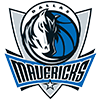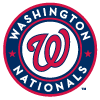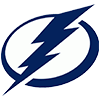QUARTERBACK
Joe Burrow, Bengals
6-3, 221, LSU — 1st (1st overall)
No QB in this class is better situated than Burrow for 2020 fantasy relevance. The Heisman Trophy winner comes to Cincinnati after a historically dominant senior season in which he threw 60 TDs to six picks while averaging 10.8 YPA against a schedule that included seven top-10 teams. His work under Joe Brady — now the Panthers' OC — bodes well for a smooth transition. Arm strength is a question, but his processing and ball placement are top notch. Burrow, 23, should be useful in two-QB formats, or even as a matchup-dependent option in single-QB leagues.
Justin Herbert, Chargers
6-6, 236, Oregon — 1st (6th)
Herbert isn't as polished a passer as Joe Burrow or Tua Tagovailoa but offers some rushing upside from a fantasy perspective. In college, he never finished in the top 25 in YPA or the top 10 in touchdown passes nationally, but he had 13 career rushing scores and ran a 4.68-second 40-yard dash at the combine. Tyrod Taylor likely will start until Herbert is ready, but it's not out of the question that the rookie wins the job out of camp.
Tua Tagovailoa, Dolphins
6-0, 227, Alabama — 1st (5th)
Talent isn't a question with Tagovailoa, but durability certainly is. Surgeries to repair a high-ankle sprain on each leg coupled with a serious hip injury cost him the chance to be the No. 1 overall pick despite a sterling on-field
QUARTERBACK
Joe Burrow, Bengals
6-3, 221, LSU — 1st (1st overall)
No QB in this class is better situated than Burrow for 2020 fantasy relevance. The Heisman Trophy winner comes to Cincinnati after a historically dominant senior season in which he threw 60 TDs to six picks while averaging 10.8 YPA against a schedule that included seven top-10 teams. His work under Joe Brady — now the Panthers' OC — bodes well for a smooth transition. Arm strength is a question, but his processing and ball placement are top notch. Burrow, 23, should be useful in two-QB formats, or even as a matchup-dependent option in single-QB leagues.
Justin Herbert, Chargers
6-6, 236, Oregon — 1st (6th)
Herbert isn't as polished a passer as Joe Burrow or Tua Tagovailoa but offers some rushing upside from a fantasy perspective. In college, he never finished in the top 25 in YPA or the top 10 in touchdown passes nationally, but he had 13 career rushing scores and ran a 4.68-second 40-yard dash at the combine. Tyrod Taylor likely will start until Herbert is ready, but it's not out of the question that the rookie wins the job out of camp.
Tua Tagovailoa, Dolphins
6-0, 227, Alabama — 1st (5th)
Talent isn't a question with Tagovailoa, but durability certainly is. Surgeries to repair a high-ankle sprain on each leg coupled with a serious hip injury cost him the chance to be the No. 1 overall pick despite a sterling on-field resume. In his two seasons as starter, Tagovailoa completed 70 percent of his 607 pass attempts with 76 TDs and nine interceptions. Miami has Ryan Fitzpatrick as a stopgap until the rookie is deemed ready, but that might not be until well into the season, so Tagovailoa is best viewed as a waiver target or best-ball dart.
Jalen Hurts, Eagles
6-1, 221, Oklahoma — 2nd (53rd)
Hurts propelled himself into Day 2 draft consideration after a strong senior season. His athleticism was never a question, but his ability as a passer did not reach its potential until he transferred from Alabama to Oklahoma and completed 69.7 percent of his throws for 3,851 yards with a nation-leading 11.3 YPA. It's debatable how much of that is the result of an Oklahoma system that produced Heisman-level play from its QBs the last three years. Either way, he finds himself in a tough spot for fantasy value behind Carson Wentz.
Jordan Love, Packers
6-4, 224, Utah State — 1st (26th)
Aaron Rodgers is under contract for at least two more seasons, so the Packers are playing the long game with Love. It makes sense; Love needs development time. He has arguably the best physical tools of any QB in the class, including arm strength, but his decision-making needs an overhaul after he threw almost as many interceptions (17) as touchdowns (20) last season. And he completed just 61.9 percent of his passes, 48th in the FBS. Love is a project who has some long-term upside but lacks a path to fantasy relevance in re-draft leagues as long as Rodgers is in Green Bay.
RUNNING BACK
Clyde Edwards-Helaire, Chiefs
5-7, 207, LSU — 1st (32nd)
Edwards-Helaire has vaulted into first-round consideration in fantasy drafts after Damien Williams'decision to opt out of the season. The LSU product is a do-it-all back whose low center of gravity and dense build make him tough to tackle. An explosive combine performance — 39.5-inch vertical, 123-inch broad jump — underscores his powerful leg drive. He is also a good receiver (55 catches on 66 targets for 453 yards in 2019) and seemingly fits perfectly with the Kansas City offense. With Williams now out of the picture, prospective Edwards-Helaire drafters will now have to view him in the context of first-round fantasy options instead of just fellow rookies.
Jonathan Taylor, Colts
5-10, 226, Wisconsin — 2nd (41st)
Taylor checks the boxes in terms of production, measurables and durability, and the landing spot makes him the top rookie running back. He ran for 6,174 yards and 50 TDs on 926 carries (6.7 YPC) and never missed a game in his three-year college career. At the combine, he ran the fastest 40 (4.39) at his position despite being the third-heaviest participant. His lack of passing-game skills might cost him third-down snaps, and Marlon Mack is still around, but Taylor has the rushing chops and offensive line help to override those concerns.
D'Andre Swift, Lions
5-8, 212, Georgia — 2nd (35th)
A three-year college contributor, Swift averaged 6.6 YPC on 440 attempts, with burst, vision and elusiveness his best attributes. He's also an adept receiver, catching 73 of 96 targets for 666 yards and five scores. The Lions spent a second-rounder on Kerryon Johnson in 2018, but 14 missed games later it's clear they wanted an upgrade. The Lions will still use Johnson to avoid overloading the rookie (he never had more than 196 carries in a season and had some nagging injuries too), but Swift should take over this backfield in Year 1 and has a strong chance at finishing as an RB2 in the fantasy landscape.
Cam Akers, Rams
5-10, 217, Florida State — 2nd (52nd)
Akers never lived up to his recruiting hype with just 4.9 YPC in college, but that can partly be chalked up to poor offensive line play — he turned in a 4.47 40 and strong jumps on a compact frame at the combine, showing projectable long speed and explosiveness for the next level. Given Todd Gurley's departure and Darrell Henderson's invisible rookie year, Akers has a path to a starting job, and his frame and athletic tools suggest he could break through in the NFL.
J.K. Dobbins, Ravens
5-9, 209, Ohio State — 2nd (55th)
The Ravens' record-setting rushing attack gets even stronger with Dobbins, who ran for 2,003 yards and 21 TDs as a junior last year. What's more, 1,755 of those yards came in shotgun formation, which is a key detail for a Baltimore offense that runs the vast majority of snaps out of shotgun or pistol. Mark Ingram is the starter, and supporting Lamar Jackson and two fantasy-viable RBs might be too much to ask, even for Baltimore's run-heavy offense. But if Ingram gets injured or loses the job, Dobbins will have RB2 value at least.
Ke'Shawn Vaughn, Buccaneers
5-9, 214, Vanderbilt — 3rd (76th)
Vaughn landed in a great spot, as Tampa Bay had an anemic rushing attack that mustered just 3.7 YPC in 2019. Ronald Jones is the only thing standing in the way of Vaughn starting, though presuming Vaughn will take the job right away is risky. Vaughn, 23, is actually older than Jones by three months despite the latter having two years of NFL experience, and while Vaughn has some decent selling points (including 7.9 YPC in 2018), it's not a lock that he gets more carries than Jones, let alone more than what Peyton Barber had last season.
Zack Moss, Bills
5-9, 223, Utah — 3rd (86th)
Moss is an excellent complement to Devin Singletary, entering a situation in Buffalo with a lot of carries up for grabs following Frank Gore's departure. Not only can Moss do everything Singletary does in terms of breaking tackles, but the rookie's bulkier frame should afford him goal-line work. Singletary had just five touches inside the 10-yard line last year while Gore had 18, so if Moss can take Gore's role in close while also rotating with Singletary between the 20s, he'll be one of the more relevant backups in the league.
Antonio Gibson, Washington
6-0, 228, Memphis — 3rd (66th)
"Offensive weapon" sounds great, but it doesn't always equate to fantasy production. Gibson was given that tag after catching 38 of 56 targets for 735 yards and eight scores and rushing for 369 yards and four TDs on 33 attempts in 2019. The Tony Pollard comp comes into play, but Gibson tested as a far more explosive athlete (4.39 40) at a heavier weight. Gibson projected as the No. 3 running back coming into the summer, but the team's decision to cut Derrius Guice means that Washington will be counting on Gibson sooner than expected. Adrian Peterson will still demand a cut of the backfield work, but Gibson is now a legitimate FLEX consideration in redraft formats for 2020. Investors still need to be mindful that Gibson's 33 career carries at Memphis could mean a steep learning curve at the position in the NFL, however.
AJ Dillon, Packers
6-0, 247, Boston College — 2nd (62nd)
Dillon's frame might inspire comparisons to Eddie Lacy or other oversized plodders, but the metrics show this is a different case entirely. Dillon was the heaviest running back at the combine but ran a 4.53 40 (11th) and had the best jumps at the position. Those tools show up in his college production with two 1,500-yard seasons despite often facing loaded boxes. Aaron Jones is the starter, but Dillon's draft slot and Green Bay's reported commitment to the run should mean Dillon sees carries, with potential to become the goal-line back.
Darrynton Evans, Titans
5-10, 203, Appalachian State — 3rd (93rd)
Derrick Henry owned a 72 percent rushing share in his 15 games last year and doesn't figure to relinquish that role anytime soon, but that doesn't mean Evans should be ignored in deep formats. He'll back up Henry and has interesting traits, including 4.41 speed and good lower-body explosiveness (37-inch vertical) to go with 2,667 rushing yards and 25 touchdowns the last two years. Henry's presence makes Evans' floor almost non-existent, but the rookie is a worthwhile late-round flier or handcuff for Henry owners.
Joshua Kelley, Chargers
5-11, 212, UCLA — 4th (112th)
The Chargers just paid Austin Ekeler, but that doesn't mean Kelley is out of the picture as a rookie. Far from it. The investment in Kelley suggests the team doesn't want to overload its 200-pound lead back, and Kelley has the talent to be a productive complementary piece behind Ekeler. Kelley's main competition is Justin Jackson. But Kelley, who tested above average at the combine, had better collegiate efficiency than Jackson, so there's a chance he leaps him on the depth chart. Jackson also saw his carries nearly halved last year despite Melvin Gordon's holdout.
Anthony McFarland, Steelers
5-8, 208, Maryland — 4th (124th)
McFarland adds some much-needed speed to Pittsburgh's backfield, but he's unlikely to be more than an occasional change-of-pace option as long as James Conner and Jaylen Samuels are healthy. McFarland ran a 4.44 40-yard dash, and he averaged 7.9 yards per carry in his one fully healthy season (2018) before an ankle injury limited him to 5.4 YPC in 2019. He maxed out at 131 carries in college, so he doesn't have a workhorse profile should injuries hit the Pittsburgh backfield. McFarland could be 2020's Justice Hill.
Lynn Bowden, Raiders
5-10, 204, Kentucky — 3rd (80th)
A receiver by trade, Bowden was asked to play as an option quarterback last season at Kentucky and answered the bell by rushing for 1,468 yards and 13 touchdowns. That was enough for Oakland to give Bowden a shot at running back. Although Josh Jacobs' role is secure, Jalen Richard could be pushed by Bowden, given the rookie's complete skill set that also includes receiving ability (67 catches in 2018). The switch to running back makes Bowden interesting, but he'll need to unseat Richard to see consistent snaps.
La'Mical Perine, Jets
5-10, 216, Florida — 4th (120th)
Perine is densely built and an accomplished receiver after nabbing 40 of 55 targets last season, but his athletic testing (4.62 40) and college rushing production — zero 1,000-yard seasons — lag behind. Le'Veon Bell might see less work after his 3.2 YPC last year, but the Jets signing Frank Gore after the draft isn't a ringing endorsement that Perine is ticketed for heavy volume. Perine is a serviceable, low-ceiling prospect with a dash of PPR upside who could see a useful number of snaps if the Jets scale back Bell's workload.
DeeJay Dallas, Seahawks
5-10, 217, Miami — 4th (144th)
Dallas adds depth to a Seattle backfield that has Chris Carson and Rashaad Penny coming off season-ending injuries. While Carson should be ready for the opener, Penny's late-season ACL tear could hold him out. The Seahawks signed Carlos Hyde, and Dallas will also compete for touches with Travis Homer, whom he backed up in college. Although Dallas doesn't have receiving skills to give him an edge, his physicality could earn him some short-yardage work.
WIDE RECEIVER
Jerry Jeudy, Broncos
6-1, 193, Alabama — 1st (15th)
Jeudy is the best route runner in the class and is dangerous in the slot, ranking second in Pro Football Focus' yards per route run metric in 2019. He averaged 11.6 YPT in his two seasons as a collegiate starter and caught 24 touchdowns, which ranked sixth in the FBS in that span. Jeudy also has the size and speed (4.45 40) to work outside opposite Courtland Sutton, immediately providing an upgrade in the receiving corps for Drew Lock. Look for Jeudy to be a Week 1 starter in Denver with legit WR3 ability and the potential for more.
CeeDee Lamb, Cowboys
6-1, 198, Oklahoma — 1st (17th)
Lamb is fluid and explosive with impressive contested-catch ability, and he's also a threat with the ball. He caught 127 of 184 targets for 2,485 yards and 25 TDs in his last two seasons and posted 807 yards as a true freshman. Lamb might be the best receiver in this class, but his path to fantasy stardom is trickier than that of his peers as he joins an offense that features Amari Cooper and Michael Gallup. So while Lamb should be productive on a per-target basis, his target share figures to be smaller than that of other first-round rookies.
Justin Jefferson, Vikings
6-1, 202, LSU — 1st (22nd)
Jefferson was unstoppable last season, catching 111 of 134 targets (83 percent) at 11.5 YPT with 18 touchdowns. Some questioned whether he was a product of the LSU system, but his strong combine (4.43 40) showed he has tools that should translate. Jefferson worked in the slot at LSU, so there may be a learning curve if he's asked to play outside. But the Stefon Diggs trade opens 6.2 targets per game, and Jefferson is positioned to absorb the bulk of those. He has little competition apart from Adam Thielen, giving him one of the highest floors among rookies.
Henry Ruggs, Raiders
5-11, 188, Alabama — 1st (12th)
Speed is Ruggs' calling card after he ran the fourth-fastest 40 (4.27) among wide receivers at the combine since 2000. And there's reason to believe he is more than just track speed. Ruggs ran the full route tree and caught 67 percent of his targets in 2018 and 2019, despite having a high average depth of target. Derek Carr's 6.6-yard aDOT in 2019 was last in the league, but Ruggs' ability to separate and run after the catch on short routes should help him mesh well with Carr and make him a staple, not just a speed decoy.
Jalen Reagor, Eagles
5-10, 206, TCU — 1st (21st)
Reagor, with his 42-inch vertical and 4.47 40, is a gifted athlete who offers speed, strength and explosiveness in a thick frame. His 2019 production was hampered by shoddy quarterback play, and his downfield role meant he saw lower-percentage throws. Reagor joins a crowded Philadelphia receivers room that already contends for targets with tight ends Zach Ertz and Dallas Goedert. If Reagor can lock down one of the starting outside receiver spots, he'll have the chance to be a deep threat for Carson Wentz as a rookie.
Brandon Aiyuk, 49ers
5-11, 205, Arizona State — 1st (25th)
Aiyuk is similar to teammate Deebo Samuel in his frame and style, adding another physical presence to the 49ers' receiving corps. He's a beast with the ball in his hands, racking up 710 of his 1,192 yards after the catch in 2019. An offense like San Francisco's where he can be schemed open is an excellent spot for Aiyuk to maximize his after-the-catch skills. He might lack elite size and speed (4.5 40) but his strengths mesh with this offense and could make him a fantasy asset, especially if Samuel misses time to start the year.
Michael Pittman, Colts
6-4, 223, USC — 2nd (34th)
Pittman broke out as a senior as he was one of three players in the nation with 100-plus catches on fewer than 140 targets. A rangy receiver with excellent athleticism for his size, Pittman can be an immediate contributor in an Indianapolis receiving corps that needs a threat opposite T.Y. Hilton. In addition to being a polished possession target, Pittman's size makes him a red-zone asset. His ability and team context give him one of the clearest paths to instant fantasy relevance of any receiver in the class.
Tee Higgins, Bengals
6-4, 216, Clemson — 2nd (33rd)
Higgins slipped to the second round but could be one of the top rookie receivers. He profiles as a starter alongside A.J. Green and Tyler Boyd, providing another rangy target for Joe Burrow. He may lack elite top-end speed after a reported 4.59 in the 40 at his pro day, but Higgins is adept at using his frame to shield defenders and make contested catches down the field (he averaged 13.0 YPT with a 65 percent catch rate on 90 targets as a junior). Higgins has a path to a starting job and the tools to contribute right away in an offense that should be much improved.
Laviska Shenault, Jaguars
6-1, 227, Colorado — 2nd (42nd)
Shenault is a versatile and physical playmaker who can line up anywhere but likely will play in the slot for Jacksonville. His calling card is his ability after the catch, as his burst and solid build make him tough for undersized defensive backs to tackle. That stands in stark contrast to his main competition, Dede Westbrook, who has a thin frame and is coming off a poor season. The pecking order beyond DJ Chark is unsettled, and Shenault can establish himself as Gardner Minshew's go-to receiver in the short-to-intermediate passing game if he can stay healthy, which admittedly has been an issue.
Denzel Mims, Jets
6-3, 207, Baylor — 2nd (59th)
An outstanding athlete for his size who had two 1,000-yard seasons at Baylor, Mims is ready to hit the ground running in New York. He has speed (4.38 40) and explosiveness (131-inch broad jump) packed onto a long frame, which will make him a downfield threat on the outside opposite Breshad Perriman. Despite the projected early role, Mims might have some growing pains after not running the full route tree in college and struggling at times in contested situations. Those struggles could be exacerbated as he makes the leap from the defense-averse Big 12 to the NFL.
Devin Duvernay, Ravens
5-10, 200, Texas — 3rd (92nd)
Baltimore's receiver depth got a major boost with the Duvernay selection. Duvernay caught 106 of 130 targets (81 percent) at 10.6 YPT in 2019, then ran a 4.39 40 at the combine, showing a combination of technical skill and plus athleticism. He profiles best in the slot, but Willie Snead's blocking has utility in Baltimore's offense, so it's possible Duvernay instead pushes Miles Boykin for snaps at first. Baltimore had the lowest pass play percentage in the league last year, and Marquise Brown and Mark Andrews draw the bulk of the targets, but Duvernay could be a big-play No. 3 with low target volume.
KJ Hamler, Broncos
5-8, 178, Penn State — 2nd (46th)
Undersized but speedy, Hamler might be Denver's starting slot receiver by Week 1. DaeSean Hamilton provided just 5.7 YPT from that spot last year while Hamler was burning Big Ten defenses at 9.6 YPT, showing crisp route running and big-play ability as 25 of his 56 catches went for at least 15 yards. That downfield ability will be dangerous when defenses already have to account for Courtland Sutton, Jerry Jeudy and Noah Fant. However, the crowded depth chart means Hamler is most likely to be a low-volume receiver.
Chase Claypool, Steelers
6-4, 238, Notre Dame — 2nd (49th)
Claypool is a rare athlete, but his projected role is murky. The only other receiver in the last 20 years to run at least 4.42 at that size at the combine is Calvin Johnson. Claypool is no Megatron, but his athleticism has to be acknowledged. The issue is finding a role in a crowded offense with several established targets. Claypool can be a mismatch and could push James Washington for snaps outside, but it's unlikely he'll carve out a significant target share as a rookie.
Van Jefferson, Rams
6-1, 200, Florida — 2nd (57th)
What Jefferson lacks in verified athletic testing and elite production — his single-season high is 657 yards — he makes up for with crisp and crafty route running. A foot injury prevented him from testing at the combine, but it's unlikely he has the top-end speed of Brandin Cooks to keep defenses honest. Still, there are plenty of snaps available on the outside, and Jefferson has only Josh Reynolds standing in his way. Jefferson, who turned 24 in July, has the tools and polish to push for those snaps, but this passing game flows through Cooper Kupp, Robert Woods and Tyler Higbee.
Bryan Edwards, Raiders
6-3, 212, South Carolina — 3rd (81st)
Edwards was a productive four-year player in college who brings size and sure hands to a crowded receiving corps. He was unable to work out at the combine (foot) but the expectation is that he'll be ready for training camp. Edwards' experience as an outside receiver should allow him to compete with Tyrell Williams while Henry Ruggs and Hunter Renfrow occupy the other spots in three-wide sets. Edwards likely won't overtake Williams, but he has an NFL-ready frame that should translate once he gets the opportunity.
Antonio Gandy-Golden, Washington
6-4, 223, Liberty — 4th (142nd)
Gandy-Golden lacks long speed (4.60 40) and agility, but his leaping ability (127-inch broad jump — 36-inch vertical) along with his size make him an intriguing player. On top of being a physical force, Gandy-Golden was also hyper-productive at Liberty with three seasons of at least 1,000 yards and 10 touchdowns. A big-bodied wideout with a massive catch radius, Gandy-Golden will provide a red-zone threat for Dwayne Haskins in Washington. The rookie will compete with second-year pro Kelvin Harmon, who is slightly smaller and less athletic, for snaps on the outside opposite Terry McLaurin. Gandy-Golden at least deserves a spot on watch lists.
TIGHT END
Cole Kmet, Bears
6-6, 262, Notre Dame — 2nd (43rd)
The Bears signed Jimmy Graham to a lucrative deal this offseason, and given that the veteran runs routes on a high percentage of his snaps, Kmet might be ticketed for blocking duties for at least this year. Kmet's long-term upside is legitimate, though. He was near the top among tight ends in the 40-yard dash (4.70) and the jumps (123-inch broad, 37-inch vetical) at the combine, and he has the frame and blocking ability to earn a high volume of snaps. Kmet's receiving skills are polished, too (43 catches on 62 targets for 515 yards and six scores in 2019). He is a strong dynasty asset but might not provide returns until Graham is gone.
Dalton Keene, Patriots
6-4, 253, Virginia Tech — 3rd (101st)
Keene's impressive combine helped propel him into the third round — he led tight ends in the short shuttle and the broad jump — but he's not merely a workout warrior. Five of Keene's 21 catches as a junior (10 games) went for touchdowns, and he finished his collegiate career with an 84 percent catch rate and 10.7 YPT on 70 targets. Keene and Devin Asiasi will compete for targets while Matt LaCosse takes on blocking duties, and Keene's superior athleticism and sure hands should give him the edge and make him the Patriot rookie to own.
Devin Asiasi, Patriots
6-3, 257, UCLA — 3rd (91st)
Asiasi was considered one of the top tight ends in his recruiting class but didn't break out until his senior year when he caught 44 passes and posted 9.1 YPT in an offense that averaged just 7.2 YPA. He's an inch shorter than the average NFL in-line tight end, but his solid movement skills (4.73 40) and receiving ability could earn him a role early in the season. Matt LaCosse can handle blocking duties anyhow, so it'll be on Asiasi to beat out fellow rookie Dalton Keene for snaps and targets this year.
This article appears in the 2020 RotoWire Fantasy Football magazine. Order the magazine now.







































